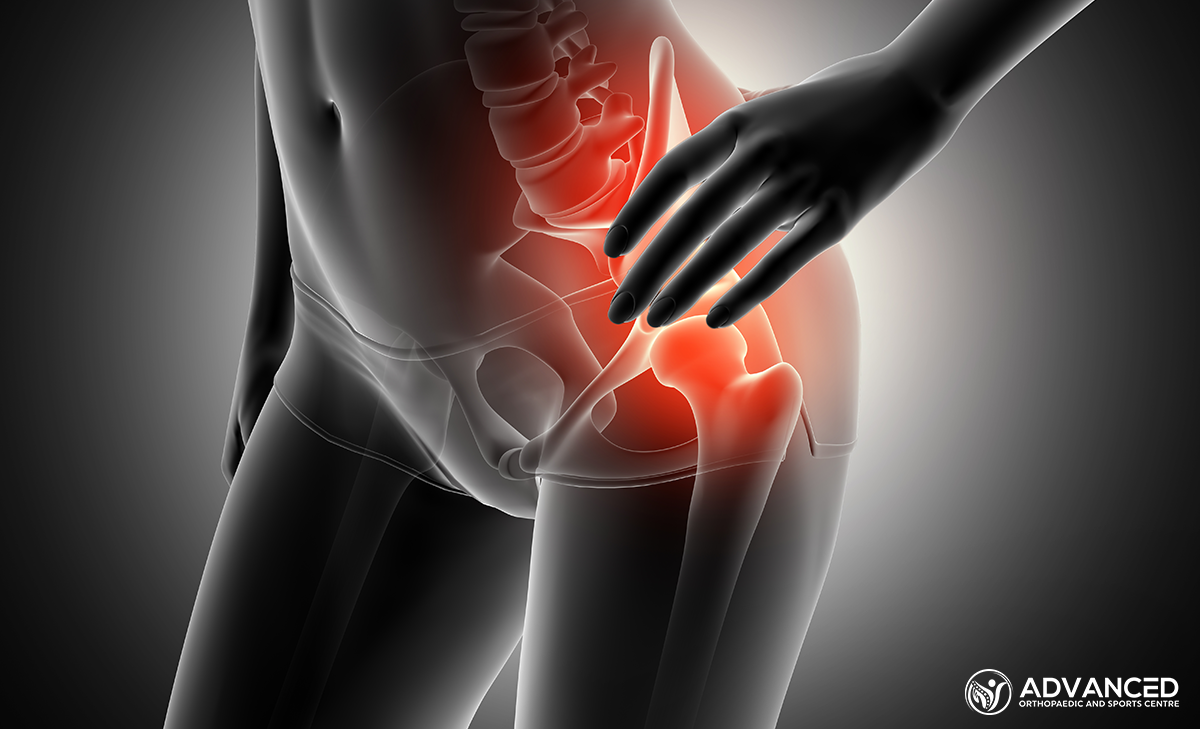What is Hip Avascular Necrosis?
Hip avascular necrosis (AVN), also known as osteonecrosis, is a condition characterised by the death of bone tissue due to a lack of blood supply. This condition can occur in one or both hips and is most commonly seen in adults.
The progression of AVN can vary, with some people experiencing a gradual onset of symptoms while others may face more rapid deterioration.
Causes of Hip Avascular Necrosis
Hip avascular necrosis (AVN) arises from several factors that impair the blood supply to the femoral head, each contributing to the progression of this condition in different ways. These factors may include:
Trauma
Trauma to the hip joint, such as fractures or dislocations, can severely disrupt blood flow, compromising the bone’s blood supply and leading directly to AVN.
Steroid Use
Prolonged or high-dose use of corticosteroids has been identified as a significant risk factor. These medications can interfere with blood flow to the bone tissue, increasing the risk of AVN.
Alcohol Consumption
Excessive alcohol intake is another leading cause of AVN. It is believed to cause fatty deposits in the blood vessels, which can restrict blood flow to the bone.
Certain Medical Conditions
Conditions such as sickle cell disease, lupus, and Gaucher’s disease can also predispose people to AVN by affecting blood flow.
Symptoms of Hip Avascular Necrosis
In the early stages, people may experience minimal or no pain. Symptoms are often only noticeable when weight is applied to the affected hip or during certain activities. Pain may become more constant as AVN advances, even occurring at rest. The pain often starts in the groin area and can extend to the buttocks or knees. Other symptoms include:
Joint Stiffness
Joint stiffness and a reduced range of motion in the hip are common as the disease progresses, making daily activities increasingly difficult.
Intensity of Pain
The intensity of pain can vary widely among people. Some may experience severe pain, significantly limiting mobility, while others may have only mild discomfort.
Late Symptoms
In advanced stages, the surface of the hip joint may collapse, leading to arthritis. At this point, symptoms include significant pain and mobility limitations, severely affecting the person’s ability to walk.
Diagnosis of Hip Avascular Necrosis
Early stages are often detected through magnetic resonance imaging (MRI), which can identify changes in the bone that are indicative of AVN before symptoms become severe. X-rays may also be used, but they are more effective in later stages when changes in bone structure are visible.
In some cases, imaging techniques like CT scans or bone scans might be employed to assess the extent of bone damage and help plan treatment.
Treatment Options for Hip Avascular Necrosis
Treatment for hip avascular necrosis (AVN) depends on the stage of the disease, symptoms, and the patient’s overall health.
Non-Surgical Treatments
Non-surgical treatments focus on alleviating symptoms and slowing the progression of AVN without surgery. These options are often considered in the early stages or for people for whom surgery may pose significant risks.
- Medications: To reduce pain and inflammation.
- Physical Therapy: Exercises to improve joint function and muscle strength.
- Lifestyle Modifications: Weight management and activity adjustments to decrease joint stress.
Surgical Treatments
Surgical interventions are considered when non-surgical treatments fail to provide relief or when the disease has progressed to a more advanced stage. These procedures include:
- Core Decompression: This surgery involves removing part of the inner layer of bone, reduces pressure, and encourages blood flow.
- Bone Grafts: Transplanting bone to support the hip joint and encourage new blood vessel growth.
- Joint Replacement: Replacing the affected parts of the hip with artificial components, typically considered in advanced stages.
Prevention and Risk Reduction
While it may not always be possible to prevent hip avascular necrosis (AVN), certain measures can significantly reduce the risk of developing this condition. These strategies focus on maintaining healthy blood flow to the bone and avoiding factors that can impair circulation.
- Limiting Alcohol and Steroid Use: Reducing alcohol intake and minimising the use of corticosteroids can decrease the risk of AVN.
- Managing Chronic Conditions: Effective management of conditions like lupus, sickle cell disease, and Gaucher’s disease can prevent complications like AVN.
- Protecting the Hip from Injury: Wearing protective gear during sports and avoiding activities with a high risk of falls or hip injuries can help maintain joint health.
Conclusion
Hip avascular necrosis (AVN) is a condition that requires timely diagnosis and management to preserve joint function and quality of life. People can navigate AVN’s challenges by understanding the causes, recognising the symptoms early, and exploring treatment options.




